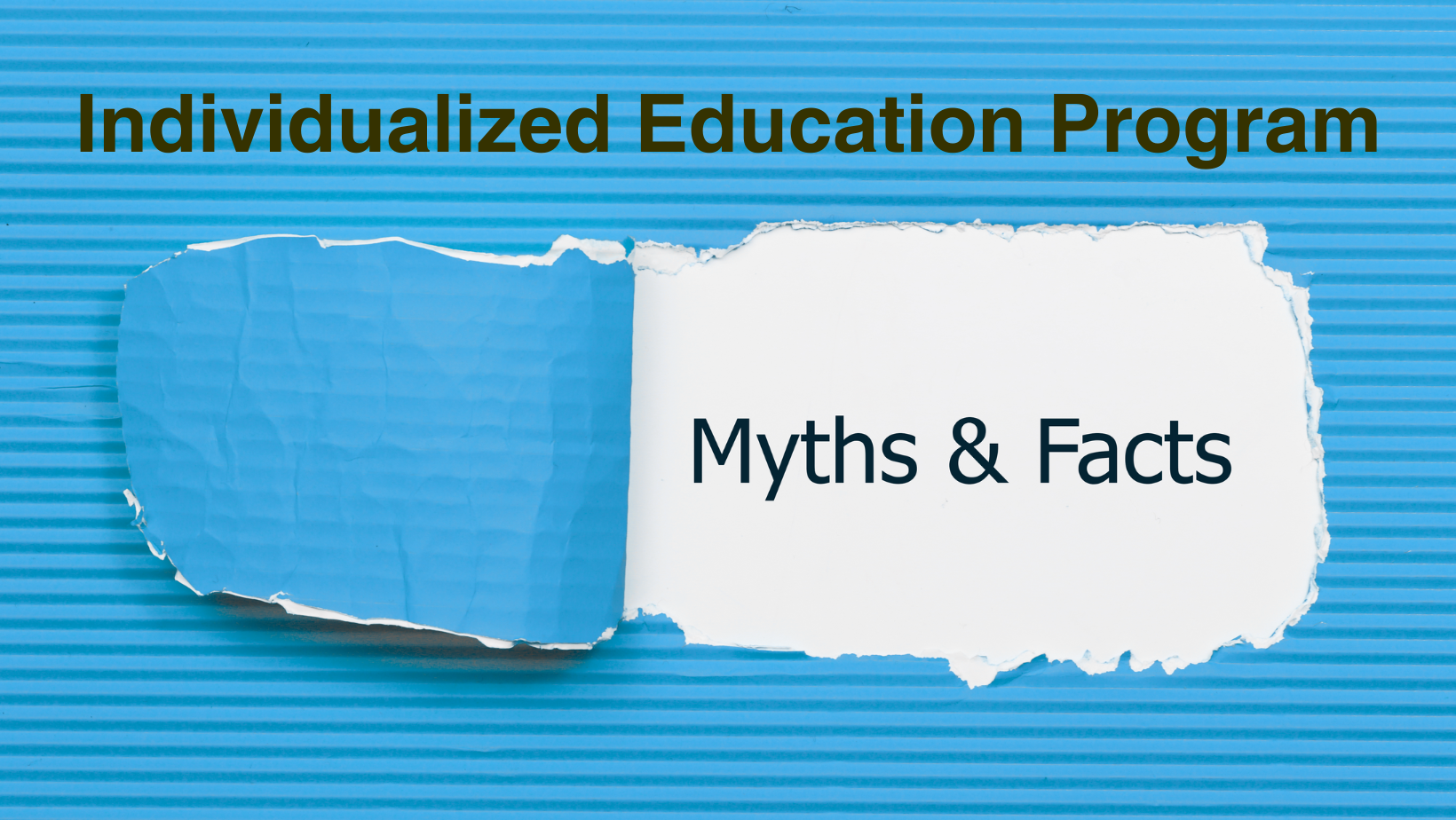
Debunking Common Myths about IEPs: Let's Get the Facts Straight
IEPs, or Individualized Education Plans, are important tools for many students. But unfortunately, there is a lot of misinformation about what an IEP is and how it works. I know when I was thrown into the world of 504s and IEPs I felt overwhelmed and lost. I have learned a lot the last few years so let’s break down 10 common myths to make our school community more informed and inclusive.
Myth 1: IEPs Label Students
Fact: IEPs are about individualization, not labeling. The purpose is to provide tailored support, ensuring students receive the education they need to succeed. An IEP acknowledges a student's unique strengths and challenges, allowing educators to create a personalized plan that facilitates their academic growth.
Myth 2: IEPs Are Only for Academically Challenged Students
Fact: IEPs serve a diverse range of students, including gifted individuals. They provide specialized plans to support students in reaching their highest potential. Whether a student needs assistance due to a learning disability, requires additional challenges to stay engaged, or has additional needs for emotional regulation and executive functioning, an IEP can be customized to meet their specific needs.
Myth 3: IEPs Are a One-Time Plan
Fact: IEPs are dynamic, evolving with the student's progress and changing circumstances. They are regularly reviewed and updated to meet the student's evolving needs. Adjustments can be made to the plan as the student's educational goals change, ensuring that the support remains relevant and effective.
Myth 4: IEPs Restrict Educational Opportunities
Fact: IEPs open doors to educational opportunities by tailoring teaching methods to suit the student's learning style. The goal is to facilitate learning and growth, allowing students to participate in the same educational experiences as their peers while receiving necessary accommodations and modifications.
Myth 5: IEPs Are Only for Children
Fact: IEPs are available to eligible students of all ages, not limited to children. Whether in elementary school or high school eligible students can benefit from an IEP to ensure their educational needs are met.
Myth 6: IEPs Are Too Complicated
Fact: While IEPs involve a structured process, educators and support teams work collaboratively to ensure the plan is comprehensive and effective. Clear communication and transparency are essential to simplify the process and ensure everyone understands the goals and strategies outlined in the IEP.
Myth 7: IEPs Stigmatize Students
Fact: IEPs aim to reduce stigma by providing the support a student needs. They help students embrace their strengths and work on areas that need improvement. The plan also encourages open dialogue, promoting a supportive and empathetic environment within the school.
Myth 8: IEPs Are Expensive and Burdensome
Fact: IEPs are a legal requirement to ensure students receive appropriate educational support. While they require careful planning and monitoring, the long-term benefits outweigh the costs. Additionally, schools receive federal funding to assist with the implementation of IEPs.
Myth 9: IEPs Lower Academic Standards
Fact: IEPs maintain high academic standards by offering appropriate accommodations and modifications without compromising the rigor of the curriculum. The objective is to help students meet the same educational benchmarks as their peers, adjusting the approach to suit their needs.
Myth 10: IEPs Are Permanent
Fact: IEPs are flexible and adjustable. As a student's needs change, the IEP is reviewed and modified to align with their current requirements. It's an ongoing process focused on ensuring the student's success and growth.
Knowing the real facts about IEPs is extremely important for creating a fair and inclusive school environment. By clearing up these myths, we want to give teachers, parents, and students the knowledge to use IEPs effectively for everyone's advantage. Let's truly understand what IEPs are about—equal chances for every student to grow and succeed. Together, we can make sure every student gets the help they need for a successful time in school.
Stay Informed!
Join my mailing list to stay informed with the latest information.
We care about the protection of your data. Read our Privacy Policy.